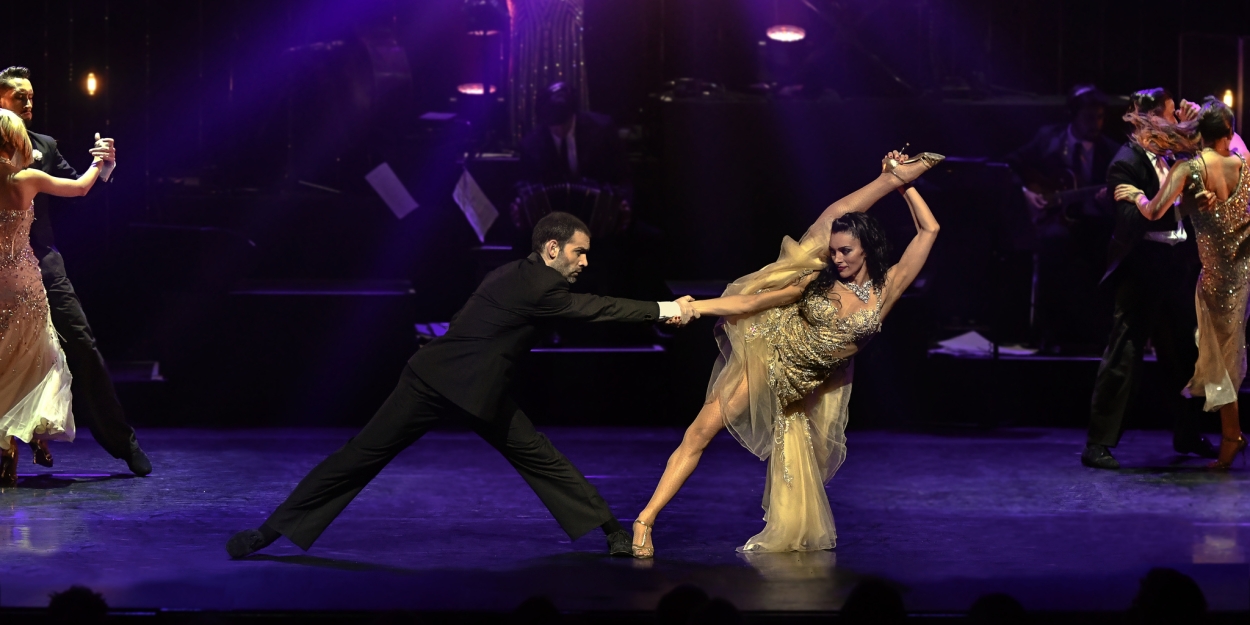Review: GERMAN CORNEJO'S TANGO IN THE DARK, Peacock Theatre
A riveting recital of physical poetry.

![]() Question time:
Question time:
1. Where is the world's oldest tango festival? (Clue: not Argentina)
2. Which World Cup-winning country apparently originated tango back in 1880? (Clue: not Argentina)
3. Which language does the word "tango" come from? (Clue: not Argentinian)
(Answers at the bottom.)
Those searching for proof of George Bernard Shaw's view that dancing is "a perpendicular expression of a horizontal desire" need look no further than German Cornejo's Tango After Dark which returns to Peacock Theatre.
The show is inspired by nuevo tango, an evolution of the traditional style based on the avant garde music of Astor Piazzolla. From the 1960s onwards, this player of the bandoneon (a type of accordion) took typical tango rhythms, added in elements of jazz and baroque then threw in complex counterpoint and extended compositional forms for good measure. Imagine Miles Davis and friends noodling away into a cool Buenos Aires night and you'd be some way there to understanding the ambience and musical underpinnings expressed in this show through the seven-strong live band and two singers.
Visually, Tango After Dark is a veritable orgy of sibillants: sexy, sensuous, stylish and seriously impressive. There's a non-stop flow of lightning-speed dances and together withhe many marvellous costume designs from Cornejo and Alberto Mauri and Charlie Morgan-Jones' lighting, this is an utter feast for the eyes and a riveting recital of physical poetry.
There are some nods to dramatic context early on as the men huddle up before setting off for an all-male group number but there is definitely no plot or throughline (and no need for either) once the show digs into its core mission and the onslaught of floor-melting fun gets going.
The live band and the singers Antonella Cirillo and Jesus Hildalgo beautifully bring the tempo up and down as required with Gemma Scalia (violin), Clemente Carrascal (bandoneon) and Benjamin Ciprian (guitar) being especially evocative. Some of the instrumentals - including one featuring an extended piano solo by musical director Diego Ramos - seem to go on for slightly longer than the Argentine War of Independence but that's a minor quibble considering that this show's impact would be a fraction of what it is without the band's output.
The twenty-six separate set pieces are both too much and not enough: some of the sections are bursting with ideas and feel like they could spin off an entire new show while latter parts feel repetitive. The ensemble numbers featuring up to five couples are panoramic in scope but these never feel more than the sum of the talented parts. One routine sees three dancers performing together but it is an awkward affair: one of the dancers is always looking left out and watching it was almost enough to put one off troilistic notions. Almost.
The most engaging parts of the show happens when there is just one man and one woman on stage (no all-male couples here like in the old days, no sirree). Cornejo's choreography delivers a never-ending series of breathtaking acrobatic moves: legs fly in and out of each other, the ladies are swung around like so much taffeta and the guys mesh speed, strength and poise to joyful effect. This is a thrilling encounter with much to appeal to fans and dabblers of the terpsichorean arts alike.
Tango In The Dark continues at the Peacock Theatre until 22 October.
Photo credit: Leo Mason
Answers:
1. Finland's Tangomarkkinat dates back to 1985.
2. Tango historian Jorge Luis Borges claims that its roots lie in Uruguay and its San Felipe Academy before the art form was performed in Buenos Aires.
3. Bit of a trick question as there is no agreement but a point for any of the following: Yoruba, Spanish, Kongo or Portuguese.
Reader Reviews
Videos

